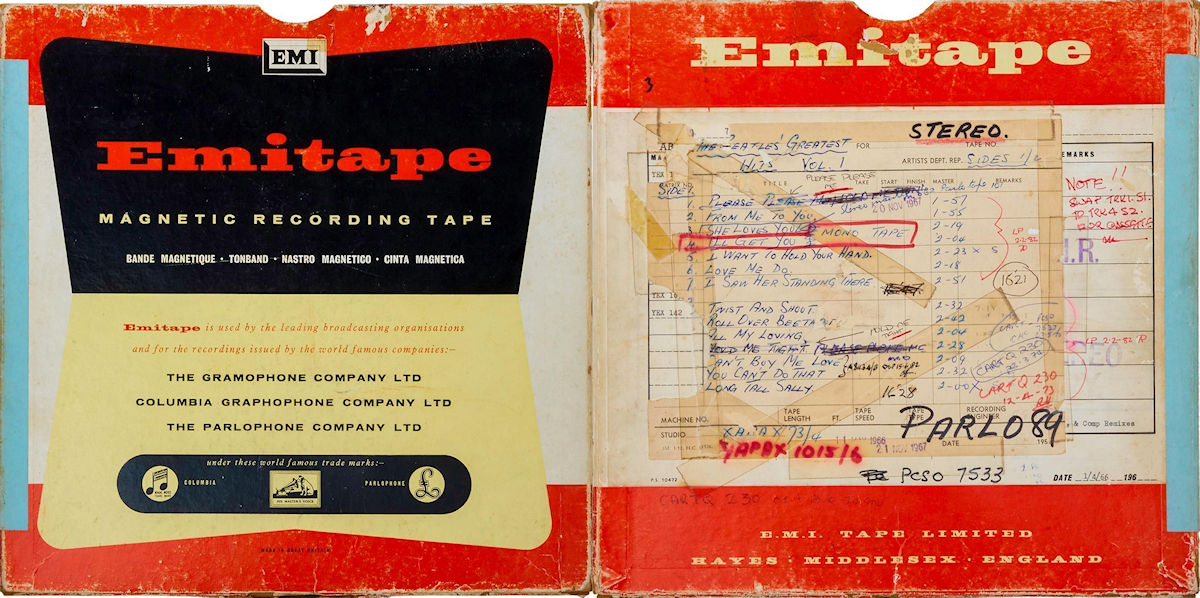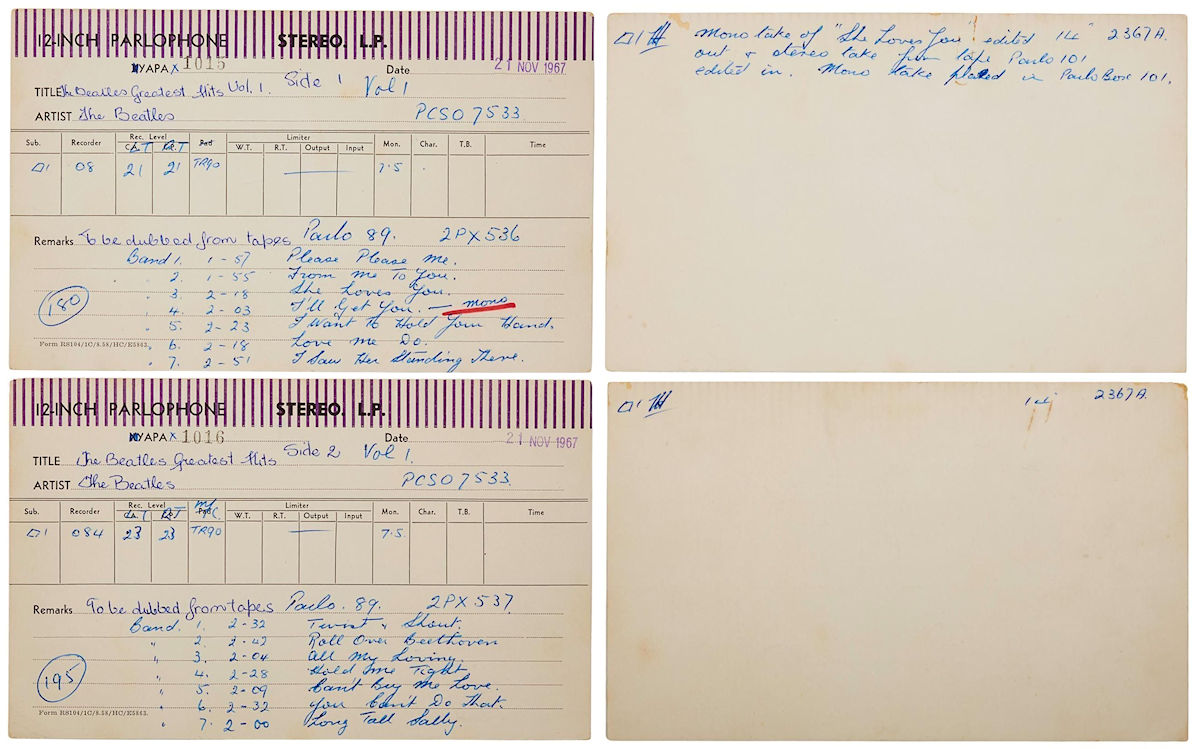Immediately below is a scan of PARLO 89, the production master tape (1/4" 15ips on 10.5" reel) of The Beatles' Greatest Hits Volume 1, containing both sides.
You'll see that EMI UK compiled the tape on 1 April 1966. Once received here, a new page was taped over the top (dating back to the fifties judging by the pre-printed date!) containing the salient local details, presumably post splicing/compiling (you can still see typed UK YEX numbers along with C.C.I.R and STEREO COPY stamp remnants from the EMI UK notes underneath).
The tape was supplied in stereo only (although 'She Loves You' and 'I'll Get You' were both the original mono mixes) - the mono release being merely a folddown of the same tape. Mono masters, carrying matrices XAPAX 73 and XAPAX 74, were created on 11 May 1966.
When EMI (Australia) finally decided to release the album in stereo, they replaced the mono mix of 'She Loves You' with the fake stereo (incorrectly labelled "stereo") mix taken from tape PARLO 101, which was the local production master tape for A Collection Of Beatles Oldies (unused at that point as our release of that album was manufactured from UK-supplied mothers, and wouldn't even be released for another six months!). This splice was carried out on 20 November 1967, with stereo masters created the following day, carrying matrices YAPAX 1015 and YAPAX 1016.
The LP was recut by Allan Parsons at Studios 301 on 2 February 1982 (-2/-2). This Maxicut sounds superior over the original cut and is the variation to get. Copies can be found exclusively on the black Parlophone label, although, as both sides were recut a few months before the black Parlophone label was introduced, copies can also be found on the late orange Parlophone label (Orange 1-Box C).
The same tape was again used in June 1982, this time by Otto Ruiter, to cut the 'Can't Buy Me Love / You Can't Do That' single for the Australian 20th Anniversary Singles Collection.
Multiple cartridge production dates are also written on the box.
Lastly, the tape box also carries a note ("!!") to "SWAP TRK1.S1. TO TRK4 S2. FOR CASSETTE". These tracks are also written and scribbled out on the box notes. AND, just in case that all wasn't clear enough, a small yellow note was also placed inside the box stating the same in red ink!
At the bottom of this page are scans of the mastering engineer's cutting note cards. These cards tell us details of the stereo mastering, undertaken on 21 November 1967.
Key details:
- ♢1 means cut number 1
- PARLO 89 refers to tape box number from where the masters were sourced
- 2PX536 and 2PX537 are the internal factory numbers allocated by EMI (Australia) on the original Acceptance Sheet
- Written on the rear of the side 1 card is "Mono take of "She Loves You" edited out and stereo [sic] take from tape Parlo 101 edited in. Mono take placed in Parlo Box 101"
- The name of the mastering engineer at EMI (Australia) at this time is now long forgotten, however, the cards give us some insight as the initials appear to be LH, TH, CH or similar. Hopefully this will prompt the memory or one of our many esteemed cutting engineers that followed in his steps!

